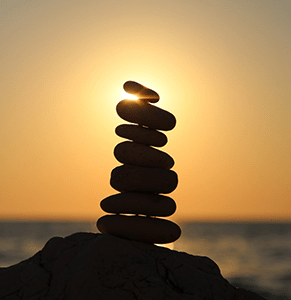
What is meditation?
Meditation is a natural process of withdrawing attention from external conditions and directing it inward to a chosen focus of concentration.
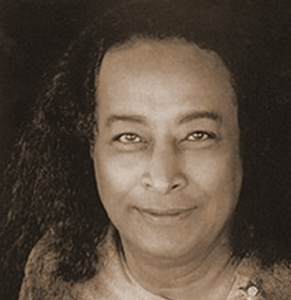
What is Kriya Yoga?
Kriya Yoga, described in Patanjali’s “Yoga Sutras”, is a Raja Yoga path and lifestyle that supports wellness and spiritual growth. It encompasses guidelines to inspired living, highlights meditation, & encourages daily practice.
The best-known teacher of the Kriya Yoga tradition in the west is the Indian yogi Paramahansa Yogananda. He arrived in the USA in the 1920s. Roy Eugene Davis was one of his most advanced direct disciples and founded the Center of Spiritual Awareness (CSA) in the beautiful mountains of NE-Georgia. This authentic kriya yoga tradition is based on several generations of direct teacher-disciple interactions, and the passing along of ancient Vedic wisdom.
The Sanskrit word kriya means “action.” The word yoga (verb-root yug, to join or unite) is commonly used to refer to procedures that harmonize the interactions of body, mind, and soul.
The practice of Kriya Yoga can facilitate overall well-being and spiritual growth, or oneness-consciousness: the final result of practice. In Patanjali’s yoga-sutras, a two-thousand-year-old treatise on superconscious meditation, kriya yoga is defined as a discipline of mental and sensory impulses, self-analysis, profound study of metaphysics (higher realities), meditation, and surrender of ordinary self-consciousness (egoism) in favor of God-realization.
Kriya yoga is a concentrated approach to Self-discovery and spiritual enlightenment: complete awakening to full knowledge of the Infinite and of cosmic processes. It includes the most effective processes of all systems of yoga, with an emphasis on wholesome, constructive living and superconscious meditation practice.
The purpose of kriya yoga practice is to restore the practitioner’s awareness to wholeness. This is accomplished by acquiring knowledge of one’s true nature as a spiritual being; cultivating rational thinking, emotional balance, physical health; purposeful living; and meditation.
To facilitate the unfoldment of innate qualities and elicit superconscious states, specific meditation techniques are taught and practiced. Beginner meditators are usually taught how to use a simple word or sound (mantra) to focus attention. After a period of preparatory study and practice, initiation into advanced meditation processes can be requested.
Although kriya yoga has been known and practiced for centuries, it was Roy Eugene Davis’ guru, Paramahansa Yogananda, who first emphasized it in the West. Yogananda traveled from India to America in 1920 and lectured, wrote, and trained disciples for 32 years before his passing in 1952. His best-known book, Autobiography of a Yogi, is now published in multiple languages around the world.
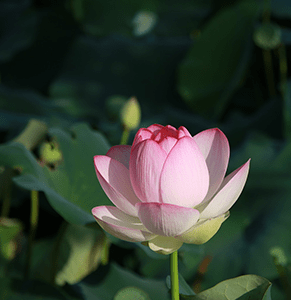
Benefits of regular meditation practice
The benefits of meditation practice are manifold. Neuroscience supports changes in the brain that correlate with better memory, stress resilience, and peak performance.
The beneficial side benefits of regular meditation practice have been widely reported in a variety of scientific journals, secular news magazines, and newspapers. These can include:
- stress reduction
- strengthening of the body’s immune system
- better organized thought processes
- improved powers of concentration
- enhanced powers of memory
- refinement and enlivening of the nervous system
- awakening of regenerative energies
- slowing of biologic aging processes
- development of the capacities of the brain to process perceptions and states of consciousness
- orderly functioning of the body’s organs, glands, and systems.
For these reasons, regular meditation practice is now increasingly recommended by many physicians and other health practitioners.
While side benefits can be welcomed and enjoyed, the primary purpose of meditation practice is to elicit clear states of consciousness and to facilitate progressive, authentic spiritual growth.
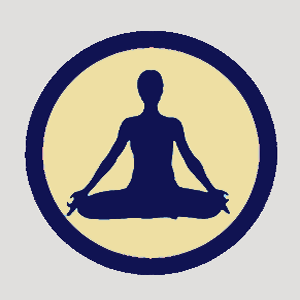
Tuesday Meditations
We offer free guided meditations in the Kriya Yoga tradition of Paramahansa Yogananda and Roy Eugene Davis. These weekly meditations are open to all truth seekers with any or no religious background. We teach basic and advanced meditation techniques that can be applied by anyone.
Meditations are on Tuesdays at 6 pm. Please sign up for the class for more information.
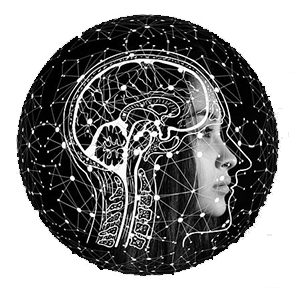
Neuroscience of Meditation:
The Neuro-biological Basis of Inner Transformation
by Marty Wuttke
The state of stillness is the goal of the practice of inward turning and meditation. It is in this state that our core, our ‘pure essence of being’ is revealed to us. For many on the path, though, this remains an elusive experience, primarily because of the ‘vrittis’, the fluctuations and changes in the mental field…
“Yoga chitta vritti nirodha.” (Patanjali, Yoga Sutras 1.2.)
Samadhi is experienced when fluctuations and changes in the meditator’s awareness are restrained and pacified. (Translation: Roy Eugene Davis)
The state of stillness is the goal of the practice of inward turning and meditation. It is in this state that our core, our ‘pure essence of being’ is revealed to us. For many on the path, though, this remains an elusive experience, primarily because of the ‘vrittis’, the fluctuations, and changes in the mental field. These fluctuations are produced by physiologic and electrochemical signals that are being processed by the brain, drawing our awareness to the result of these processes which we experience as our subjective thoughts and emotions.
The brain is the organ of consciousness. Consciousness is akin to a light shining on the brain and its functions, enlivening it, but separate from the physical organ. Just as electricity is separate from the hardware and software of the computer – and without it, there would be no function. Depending on which part of the brain the activity is occurring we will have corresponding experiences. Therefore, it can be useful to understand the necessary changes in the brain the spiritual seeker experiences as he/she progresses towards more expansive levels of awareness.
Seers and teachers of enlightenment traditions understood the necessity of a systematic, self-disciplined approach to the unfolding of divine potential. In order to ‘still’ the fluctuations, which are electrochemical in nature, specific practices were delineated to gradually refine and transform the brain and nervous system so that pure consciousness could be experienced. We now have the technology to look into this process of refinement and understand the profound knowledge these sages have passed on.
Within each temporal lobe of the brain lies the amygdala. It is the function of this tiny area to activate memory circuits in response to both positive and negative emotional experiences. In a study, participants watched an emotionally charged movie while the researchers measured the activity of the amygdala using positron emission tomography (PET). Several weeks later the participants were asked to take a test to determine the accuracy with which they remembered scenes in the movie. The researchers found that it was those scenes where heightened amygdala activity was recorded that were recalled with detailed accuracy. The more activated the brain is in a given situation, the more we will create memory. This is so that in the future the brain will automatically either be attracted to or diverted from a situation, depending on how it was interpreted and categorized. This is an important mechanism as it programs our nervous system to avoid danger and to be attracted to pleasurable experiences without our having to make continuous decisions. The amygdala serves as a monitor of our environment to determine the emotional-motivational significance of the stimulus.
However, this automatic mechanism can also be an obstacle for the spiritual aspirant. The close-by hippocampus also participates in this modulation, but more so as a damper in order to keep the system from going into over-arousal and thus maintain a state of quiet alertness. The hippocampus signals another structure, the hypothalamus, to release chemicals that will activate or deactivate the systems of the body when needed. It is this flow of stimulus-memory-reaction that creates the activity referred to by Patanjali as the vrittis, or the fluctuations. If we are not able to discern between what is real and what is false or what is imagination, then thinking patterns of fear, survival, and ego-centered thinking occur and we will remain in a loop of reactive and unconscious behavioral patterns. Breaking these patterns requires a shift of brain function that research has identified as occurring in meditation practitioners. It would appear that the ability to inhibit these reactive patterns and to keep them from triggering other areas of the brain that push us into primitive responses is important. Indeed, it is a component in the generation of certain mystical experiences. It has been documented that the amygdala, the hippocampus, and the neocortex are intricately involved in mystical states and for these states to occur a rerouting and inhibition of automatic-unconscious responses must occur.
When we examine the methods of spiritual paths such as Kriya Yoga, we can gain insight into the neurobiological effects of these systematic steps of spiritual transformation. According to the “eight limbs of yoga” as delineated by Patanjali, the Yamas (first limb)are psycho-physiologic in effect serving to create a state of quiescence in the nervous system. By being harmless we perceive no threat and demonstrate no fear. By being truthful we eliminate inner conflicts in what we know and claim to know. Non-stealing allows us to be ‘Self-sufficient”, by knowing and demonstrating that our needs are met by our consciousness of being a part of the whole. The right use of vital energy helps us conserve this energy and non-possessiveness keeps us free from attachment to objects.
The Niyamas (second limb) give us the foundation for daily living to correct any negative behaviors habits or patterns that may have been erroneously adopted; purifying us physically, mentally, and emotionally. Practicing contentment in all circumstances, engaging in superconscious meditation, self-study, and surrendering of the sense of separation from God, all serve to further the neurologic prerequisite for brain activity that is calmer and quieter.
The remaining steps (limbs) further refine and transform the brain and nervous system so that the fluctuations of chitta lessen and higher consciousness can be experienced. Through yoga postures we increase awareness and conscious control of the autonomic nervous system body. Through the practice of breathing exercises, we increase awareness and conscious control of breath and life force. Through sense withdrawal, we reverse the flow of our 5 senses from external objects. Through concentration, we fix our attention to interior awareness. Through contemplation we direct attention away from “I” generated mental events: our subjective thoughts and emotions. Finally, we enter Samadhi: fixing attention at the deepest level of Self-experience – the state of pure consciousness.
As a result of our (yogic) practices and because of the harmonizing and enlivening effects upon the nervous system we become healthier. The mind naturally becomes clearer, our immune system is regulated, our powers of discernment increase, and the virtues are no longer a practice but rather embodied. Our awareness of being individualized units of God – of having the ‘Consciousness of Presence’ is firmly established in our body-mind-brain.
The Power of Mantra Practice
Talk at the Center for Spiritual Awareness (online seminar)
Why is mantra practice able to enhance mental and physical health? Stella explains the power of mantra practice on a sound-vibrational level and reports psychological scientific findings on the use of Mantras.
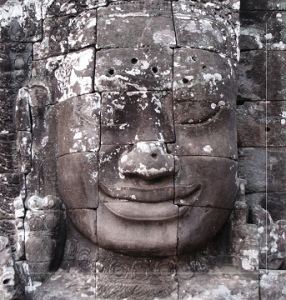
The Inner Smile - 30min guided meditation
The Inner Smile Meditation supports inner resiliency, physical and mental well-being.
After a few lessons only, I was already able to feel benefits.”
“The meditation course was great! A perfect mix of theory and practice: Stella gave insights about the effects of meditation and sound on the body, introduced different meditation techniques and demonstrated them clearly. The joined meditations and Biofield Tuning sessions were amazingly relaxing! After a few lessons only, I was already able to feel benefits for myself.
Stella brings together knowledge, heart, and spirituality!”
